Aug
25
2008
Last week I posted my story on my boat trip to Northern Sumatra. Here’s a sick video by Patagonia and their sponsored surfers (the Malloys, Belinda Baggs, Fletcher Chouinard) of the their trip to the same area.
[youtube ydshhcofDjY]
Aug
25
2008
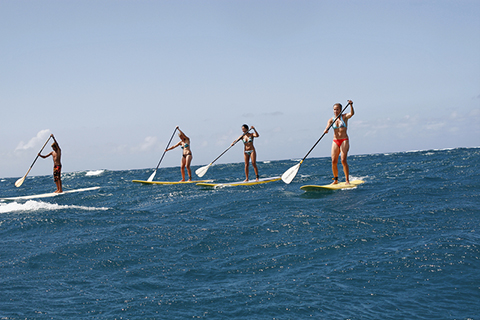
There’s no question Stand up paddle surfing is about to go mainstream. Board prices have come down significantly and its becoming more and more visible. USA Today has an article that talks about Laird Hamilton’s involvement and promoting the sport. What’s becoming apparent of the sport is that is has the potential to be a true mainstream sport and accessible to a huge range of people that wouldn’t have considering surfing. Here’s a link that talks about SUP in lakes and rivers. The USA Today quotes Laird Hamilton as saying that SUP “will be bigger than surfing.”
I tried Stand up paddle surfing (SUP) last week for the first time and was pretty impressed. I got up cruised around a bit in fairly choppy water at Sunset and made a weak attempt at paddling into a wave. What was more impressive was watching a friend of mine, a girl who’s been learning surfing for a few months, stand up on the board and blaze back and forth on the thing. SUP have the huge advantage for lighter surfers. So while I was struggling a bit, Cristina was cruising along effortlessly. Not surprisingly, she loved it.
It was seeing that and hearing about another friend of mine, also new to surfing, getting hooked on SUP that made me see the real future in the sport. I’ve tried to teach dozens of friends of mine to surf. Usually they go out once or twice, maybe catch some whitewater, then later get frustrated by the crowds and how difficult it really is to catch a wave in most places. It’s completely discouraging sport to learn anytime after you’re 20 years old.
SUP is relatively easy to learn and people can appreciate a lot of aspects of surfing without hassling with crowds, learning new surf breaks, and getting worn out just paddling the board out. Just paddling around on the board is fun, and likely to get more people who weren’t likely to stick with surfing to do it.
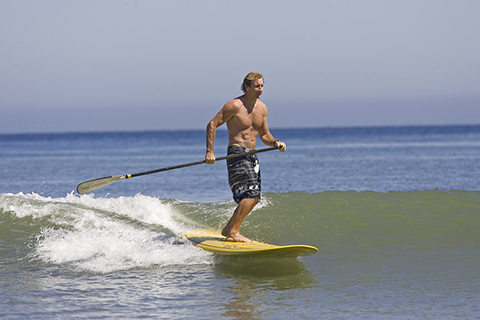
SUP does have a few drawbacks. It’s currently expensive to get a set-up ($1200-1500 for the board and $300-500 for the paddle). It’s a bitch to haul the stuff down to the beach especially for lighter surfers. And it’s definitely going to cause some tension in the line-ups. In spite of these draw-backs, I believe it can have true mass appeal. As more people give it a try, more people will be out enjoying surfing and the ocean and hopefully supporting the causes most important to surfers like clean water, protection of threatened breaks, and protection of marine life. The risk of dozens of SUP surfers crowding line-ups exists, but surfing has always policed itself. The beauty of SUP is how it enables surfers to take in the surroundings and appreciate a view point other than inches from the water. SUP surfer can also cover a lot of ground relatively easily, so hopefully a lot of them will be surfing in area out of the way and more difficult to get to.
Garrett McNamara at Pipeline

[youtube QNo8HVX9O_g]
Aug
07
2008
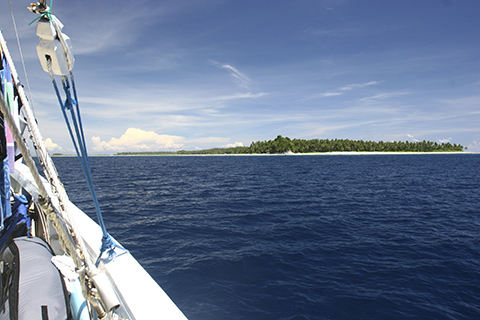
I recently published my account of a surf trip to Northern Sumatra aboard the Mikumba run by Sumatra Surfariis, a great charter operator for Indonesia, in Everywhere Magazine. Everywhere Magazine is part of 8020 publishing that also publishes the photo-focused magazine JPG Magazine, filled with user submitted and voted on content. They’re both great magazines, check them out. Here’s the full pubished account below (link to story an Everywhere Magazine). Check out my photos at JPG Magazine. Incidently, the photo at the header of this blog is from this boat trip to Northern Sumatra without a doubt one of the last great unexplored areas of surfing. Unlike the Mentawais, there are only a few charters that operate in the area.
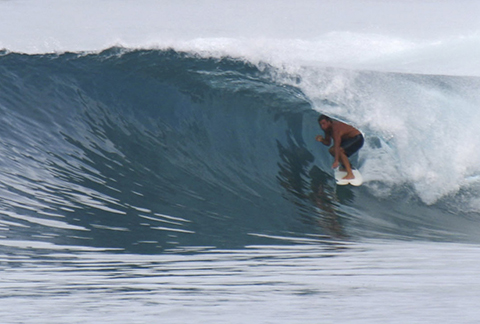
Points North – Surf Exploration in Northern Sumatra
We plan for months. My packing list is two pages long. There are of eight of us, surfers traveling from New York, California, and Hong Kong. We are embarking on a two week excursion on a converted Indonesian freight boat to remote tropical islands to explore and surf. We are going to surf waves that most surfers only see in magazines and videos and will have these waves to ourselves.
We start in Sibolga, Northern Sumatra, Indonesia after over 30 hours of flights and an overland trip across Sumatra. Sibolga is the last port before Banda Aceh, the northern most province of Sumatra and the one hit heaviest in the 2004 Tsunami. From the dirty anonymous port, we chart a course west. The islands where we will be searching for surf are so obscure and unexplored that after the 2004 Tsunami the Indonesian government relied on the help of the handful of surf charter operators in the area to chart courses to the isolated villages to bring relief supplies.
[Continued after the break]
Continue Reading »
Aug
07
2008
Ok, so what, you’ve won a record 8 world titles and are well on your way to a ninth. You hang courtside in LA at the NBA finals and date a few super-models. But can you pull into a barrel, come out and and switch feet before going into the next barrel section all in a wave you’ve never surfed before in a WCT contest?! Oh, you can…
[youtube _UF17nDTh8w]
Aug
06
2008
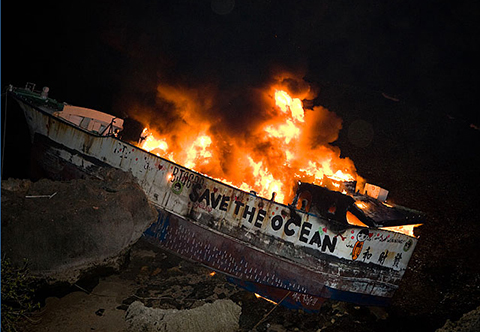
In spite of the shipwrecked Taiwanese Fishing Boat on the reef at Padang Padang, the Rip Curl Pro Search 2008 proceeded without incident first at the wave at Padang Padang and then as the swell dropped up the point at Uluwatu and Racetrack (section of Uluwatu). Interestingly enough, the press never stated where the event was being held electing to say instead “Somewhere in Indonesia.” Uluwatu hasn’t been a secret spot since it blew up on the surf scene 30 years ago and was featured in the movie “Morning of the Earth.” Padang Padang got especially timely exposure when the Taiwanese fishing boat ran aground there a week before the contest was supposed to be held. So much for keeping a spot secret.
The Balinese authorities who blew their chance to drag the grounded boat off the reef the first few days it after it had grounded there, recently decided burning the it was the best alternative (WTF?!). According to their spokesman, “The objective of burning the boat was to reduce it’s size. The next step will be to cut up the remaining wreck and have it removed piece by piece to a place where it will not distrub the tourist beaches in the Bukit areas.” The ROLE foundation has been providing updates on the situation in Bali.
You would think that aside from furthering an environmental disaster after the fuel and oil have already leaked out onto the reef and waters, you would want to minimize the impact of further damage to the environment. You might also think that cutting apart a burned and broken boat would be more hazardous and dangerous than one that was intact. Not so for the Indonesians. At this point, I don’t think it can really get any worse.
Jul
21
2008
News broke last week that a missing Taiwanese fishing boat suspected of illegal fishing practices ran aground on the reef at the World-class wave, Padang Padang in Bali, Indonesia. The captain and crew fled in the night and boat the sat on the reef, and sat. The swell was completely flat for a few days, an ideal time to extract this boat from the reef and avert a potential disaster. Well, the opportunity to remove the boat came and went. Local officials made little effort to extract the boat. They actually tried to use a couple of Balinese fishing boat to pull it off the reef at high tide. Well, turns out they arrived late and if anyone has been to Bali, you would know that it would take about 100 Balinese fishing boats to pull that thing off the reef. As of the most recent swell, the boat was pounded onto the inner reef, puncturing her hull and spilling oil and fuel on the reef and across the line-up. See images and story below (from Surfline.com).
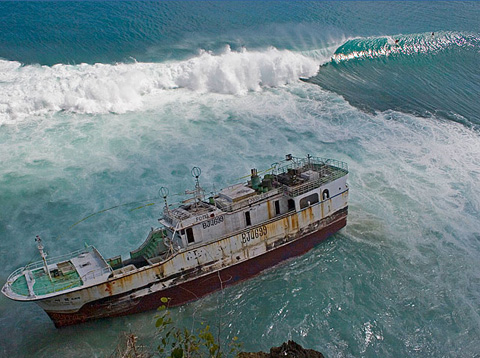
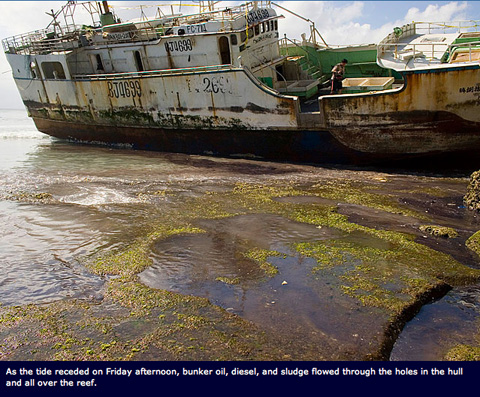
Continue Reading »
Jul
21
2008

An amateur photographer, Kem McNair, caught a photo of a Blacktip “Spinner” Shark catching some air sharing a wave with a surfer.
Kem McNair, who had finished surfing at New Smyrna Beach, Florida, before taking three images of the shark, shot in under a second, said: “I saw something in the background and I thought, ‘What was that?’. I looked back at the display on my camera and there it was — a spinner shark.”
Blacktip sharks, known as spinners because of their habit of leaping out of the water, are common in the shallow coastal waters and estuaries of Florida. The majority of shark bites in the state are blamed on the species and New Smyrna beach is notorious for attacks, this year the toll has already reached twelve.
“We see them all the time,” says McNair of the 6ft specimen he captured on film, ” if you ride a wave and the water is clear you may see two or three sharks in the length of one ride…”
Interestingly enough, New Smyrna Beach is ranked as one of the worst in the world for shark attacks. And it’s those Spinner sharks that are most likely to come in for a taste…
Here’s a link to McNair’s site with the three photo sequence of the shark jumping.
Jul
17
2008
Surf forecasting seems to be art and science. The problem is that I haven’t found a site that I think does it well. Surfline is decent, but the models are often off and seem to forecast generally bigger waves than often arrive. Storms and waves have such huge variables that you need a more detailed forecast that’s easy to understand. Adam Wright is a professional surf forecaster since 1999 (probably the time when the term “professional surf forecaster” was first used). He’s worked for Surfline and Wavewatch. He has three forecast sites with daily updates and easy to understand explanations of swell and wind forecasts. He seems to be spot on all the time. Check out the sites.
Southern California Forecast.
Northern and Central California Forecast.
Baja Forecast.
He’s also got good links to how to forecasting and surf break maps that map out the break and talk about best swell angles, etc. Here’s one for Rincon.
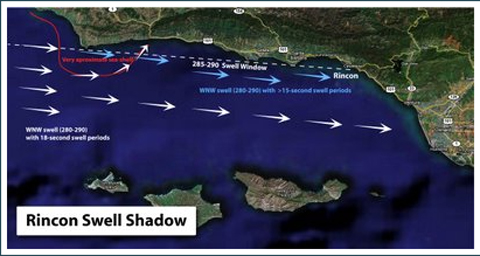
Jul
15
2008
Everyone’s looking for the new Costa Rica to find their patch of beach to build a bungalow and their perfect wave out front. First there was Costa Rica, now Panama and Nicaragua. Scott Balogh of Red Frog Bungalows writes on Bocas Del Toro, the stunning, uncrowded islands on the Caribbean side of Panama with epic surf and beautiful turqoise barrel. The crowds haven’t yet arrived and land is still available. It’s close to the U.S., cheap, and is going off when the rest of the tropics are flat (December to March, June to July).
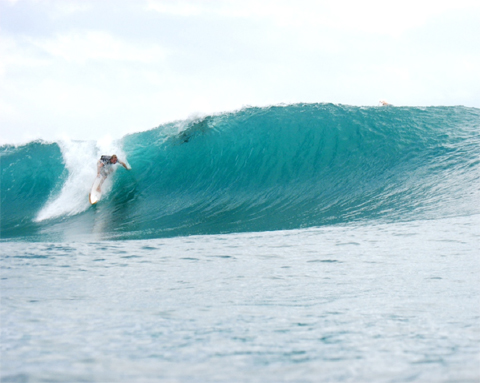
Continue Reading »










